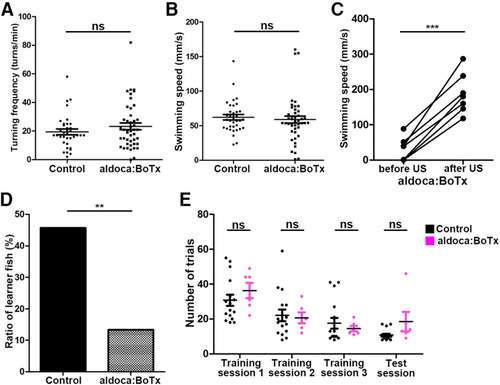Figure 4.
- ID
- ZDB-FIG-210611-84
- Publication
- Koyama et al., 2021 - Involvement of cerebellar neural circuits in active avoidance conditioning in zebrafish
- Other Figures
- All Figure Page
- Back to All Figure Page
|
Expression of botulinum toxin in PCs suppresses active avoidance conditioning. |

